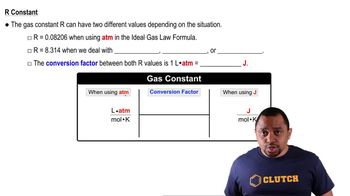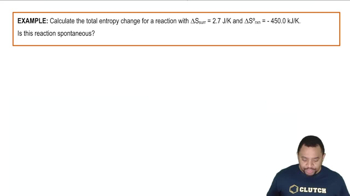(b) A particular chip snack food is composed of 12% protein, 14% fat, and the rest carbohydrate. What percentage of the calorie content of this food is fat?
A hamburger contains 28 g fat, 46 g carbohydrate, and 25 g protein. What is the fuel value in kJ in one hamburger? How many calories does it provide?
 Verified step by step guidance
Verified step by step guidanceKey Concepts
Caloric Value of Macronutrients

Conversion Between Energy Units

Total Energy Calculation

(a) A serving of a particular ready-to-serve chicken noodle soup contains 2.5 g fat, 14 g carbohydrate, and 7 g protein. Estimate the number of Calories in a serving.
The heat of combustion of fructose, C6H12O6, is -2812 kJ/mol. If a fresh golden delicious apple weighing 4.23 oz (120 g) contains 16.0 g of fructose, what caloric content does the fructose contribute to the apple?
The heat of combustion of ethanol, C2H5OH(l), is -1367 kJ/mol. A batch of Sauvignon Blanc wine contains 10.6% ethanol by mass. Assuming the density of the wine to be 1.0 g/mL, what is the caloric content due to the alcohol (ethanol) in a 6-oz glass of wine (177 mL)?
The standard enthalpies of formation of gaseous propyne (C3H4), propylene (C3H6), and propane (C3H8) are +185.4, +20.4, and -103.8 kJ/mol, respectively. (a) Calculate the heat evolved per mole on combustion of each substance to yield CO2(g) and H2O(g). (b) Calculate the heat evolved on combustion of 1 kg of each substance.
